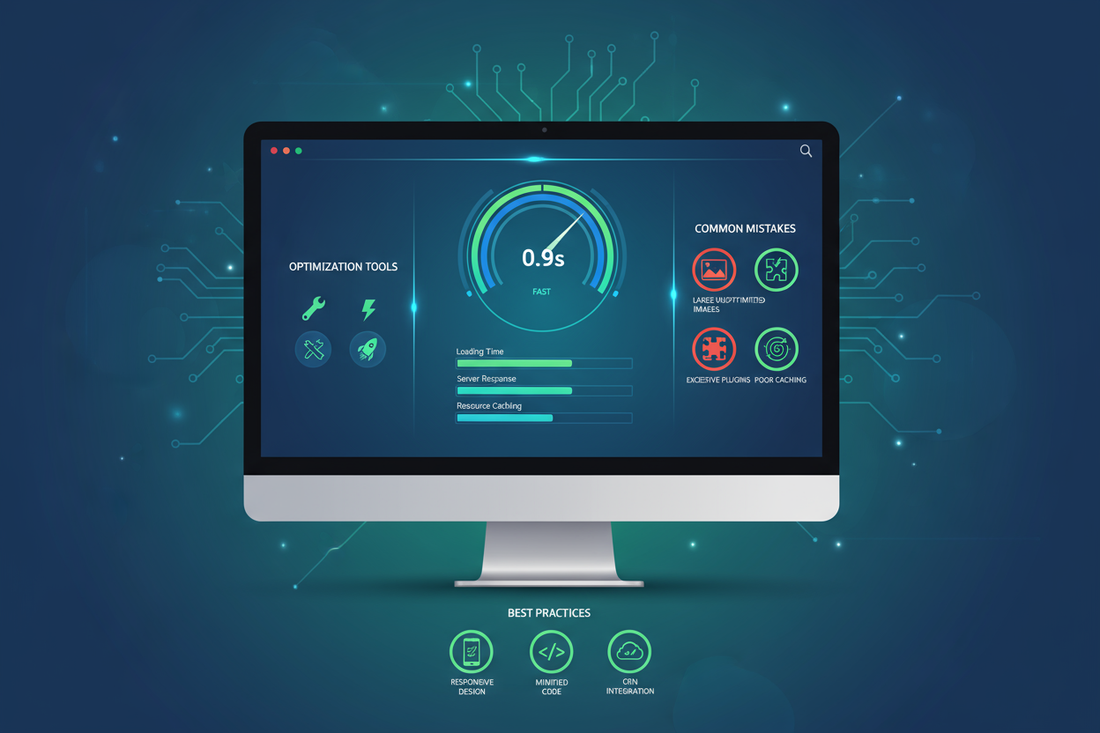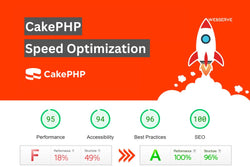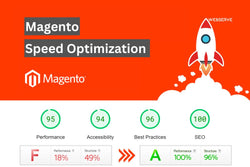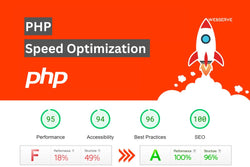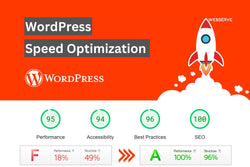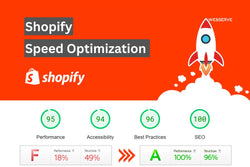A slow website can kill your SEO rankings, user engagement and conversions in the competitive digital world. Most companies pour money into website speed optimization, only to be left disappointed by the results- and it’s completely understandable- they tend to make the same mistakes. Webserve Digital have also worked on more than 300 websites, from WordPress, Shopify, HubSpot, BigCommerce to Webflow, Joomla (yes people still use it), Laravel and the list goes on (ohh and HTML of course), and seen what the standard is that stomps out your site speed optimization success.
This post serves to find the common mistakes discussed here along with proposed solutions and insights after reviewing data, doing before and after analyses between two techniques or incident reports. If you are looking to improve the load time of your website, optimize web performance or just the overall speed of your WordPress site, don’t make these mistakes and you will save hours, money and countless lost conversions.
1. Ignoring Core Web Vitals
Many businesses focus only on raw page load speed, and ignore LCP (Largest Contentful Paint), FID (First Input Delay) and CLS (Cumulative Layout Shift). Although your homepage loads under 3 seconds, unoptimized Core Web Vital can still damage SEO, user experience and mobile performance.
-
LCP: Large images or sliders slow the perceived load.
-
FID: Heavy JavaScript affects interactivity.
-
CLS: Layout shifts frustrate users.
Webserve Digital increased LCP (WordPress and Shopify) site performance by 80–90%, which resulted in greater ranking and engagement on Google.
2. Using Unoptimized Images and Media
Images are often the heaviest elements on a webpage. Common mistakes include:
-
Uploading full-resolution images without compression.
-
Ignoring next-gen formats like WebP.
-
Not implementing lazy loading for below-the-fold content.
Impact: Slower load times, increased bounce rates, and poor WordPress website speed improvement.
Solution: Compress images, convert to WebP, and use lazy loading. For example, when we optimized images for a Shopify store, load times decreased from 5.8s → 2.1s which resulted in an increase of 35% conversion rates.
3. Render-Blocking CSS and JavaScript
Many sites load large CSS and JS files upfront, delaying content rendering. Mistakes include:
-
Not minifying CSS, JavaScript, or HTML.
-
Not deferring non-critical scripts.
-
Using too many third-party plugins or apps.
Impact: Pages seem slow, attempts to speed up the site don’t work and PageSpeed Insights scores remain under whelming.
Solution:
-
Minify and combine CSS/JS files.
-
Defer or async scripts.
-
Audit plugins and remove unnecessary ones.
We were able to apply these on HubSpot or Webflow sites and increased our average FID by 60–70ms.
4. Ignoring Server Response Time (TTFB)
Time to First Byte (TTFB) is a critical but often overlooked metric. Common mistakes:
-
Using slow shared hosting.
-
Not leveraging caching mechanisms.
-
Overloaded databases and unoptimized backend queries.
Impact: High TTFB delays site speed optimization for conversions, and in turn slows down SEO.
Solution:
-
Upgrade hosting or use VPS/CDN.
-
Enable Gzip or Brotli compression.
-
Optimize database queries and implement caching plugins (WP Rocket, LiteSpeed Cache).
For example, we improved TTFB for a BigCommerce store from 6.1s → 2.5s which led us to see bounce rate down and conversion rate go up.
5. Poor Use of Caching and CDN
Caching mistakes include:
-
Not enabling browser caching.
-
Not using CDN for global content delivery.
-
Using conflicting caching plugins.
Impact: Distant users who sit on other side of the server experience latency, which is not optimal for website load time.
Solution: Implement browser caching, configure CDN properly, and regularly purge cache after updates.
Using this for a multilingual HubSpot site increased Google PageSpeed Insights score from 56 → 92.
6. Ignoring Mobile Performance
Many businesses optimize desktop speed but forget mobile users. Mobile optimization mistakes include:
-
Heavy desktop-oriented images and scripts.
-
Ignoring mobile-first Core Web Vitals.
-
Poor responsive design affecting load times.
Impact: Mobile bounce rate increases, and SEO rankings drop.
Solution: Optimize for mobile site speed, use responsive images, and test with PageSpeed Insights mobile analysis.
Our Webserve Digital audits showed mobile load time improvements averaging 2.5s → 1.8s across 300+ sites.
7. Overloading Websites with Plugins and Apps
Excessive plugins or third-party scripts are common culprits in slow websites:
-
Unnecessary WordPress plugins.
-
Shopify apps not optimized for speed.
-
Heavy HubSpot modules.
Impact: Increased HTTP requests, higher CLS, slower FID.
Solution: Conduct plugin audits, remove unused scripts, and replace heavy plugins with lightweight alternatives.
After plugin optimization for a WordPress eCommerce site, PageSpeed Insights score jumped 47 → 93, with bounce rate dropping from 48% → 30%.
8. Not Monitoring After Optimization
Some businesses optimize once and forget. Mistakes include:
-
Not tracking Core Web Vitals post-optimization.
-
Ignoring new content speed impacts.
-
Neglecting updates that slow down the site.
Impact: Initial gains fade over time, reducing website performance optimization ROI.
Solution: Continuous monitoring using GTmetrix, Pingdom, and Google PageSpeed Insights. Set up alerts for performance drops.
Real-World Results
After addressing these mistakes on 300+ sites:
-
Average Page Load Time: 6s → 2.2s
-
Average Bounce Rate Reduction: 45% → 28%
-
Conversion Rate Increase: 2% → 4%
-
PageSpeed Insights Score: 48 → 93
Platforms optimized included WordPress, Shopify, HubSpot, BigCommerce, Webflow, Joomla, Laravel, Angular, React, HTML, Squarespace, and Weebly.
FAQs About Website Speed Optimization Mistakes
1. What’s the most common website speed mistake?
Ignoring Core Web Vitals and render-blocking resources is the top issue across all platforms.
2. Can optimizing speed affect my website design?
No. Proper speed optimization services maintain design and functionality while improving performance.
3. How often should I audit my website speed?
At least monthly, or after major updates, to sustain website performance optimization.
4. Does mobile optimization really matter?
Absolutely. Mobile users represent over 60% of web traffic, and Google prioritizes mobile-first indexing.
5. Do you provide ongoing support after optimization?
Yes. We offer post-optimization monitoring and support to ensure website speed improvement is sustained.
